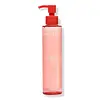What's inside
What's inside
 Key Ingredients
Key Ingredients

 Benefits
Benefits

 Concerns
Concerns

No concerns
 Ingredients Side-by-side
Ingredients Side-by-side

Cetyl Ethylhexanoate
EmollientPolyglyceryl-5 Dioleate
EmulsifyingGlycerin
HumectantHydrogenated Polydecene
EmollientSorbitol
HumectantWater
Skin ConditioningPentaerythrityl Tetraisostearate
EmollientPolyglyceryl-5 Oleate
EmulsifyingPolyglyceryl-6 Caprylate
EmulsifyingHelianthus Annuus Seed Oil
EmollientVitis Vinifera Seed Oil
EmollientCamellia Sinensis Seed Oil
HumectantZingiber Officinale Root Extract
MaskingAnanas Sativus Fruit Extract
Skin ConditioningCentella Asiatica Extract
CleansingLactobacillus/Papaya Fruit Ferment Extract
AbrasiveCalendula Officinalis Flower Extract
MaskingGlycyrrhiza Glabra Root Extract
BleachingCaprylyl Glycol
EmollientCitrus Junos Fruit Extract
Skin ConditioningChamomilla Recutita Flower Extract
MaskingCaprylhydroxamic Acid
Butylene Glycol
Humectant1,2-Hexanediol
Skin ConditioningEthylhexylglycerin
Skin ConditioningCetyl Ethylhexanoate, Polyglyceryl-5 Dioleate, Glycerin, Hydrogenated Polydecene, Sorbitol, Water, Pentaerythrityl Tetraisostearate, Polyglyceryl-5 Oleate, Polyglyceryl-6 Caprylate, Helianthus Annuus Seed Oil, Vitis Vinifera Seed Oil, Camellia Sinensis Seed Oil, Zingiber Officinale Root Extract, Ananas Sativus Fruit Extract, Centella Asiatica Extract, Lactobacillus/Papaya Fruit Ferment Extract, Calendula Officinalis Flower Extract, Glycyrrhiza Glabra Root Extract, Caprylyl Glycol, Citrus Junos Fruit Extract, Chamomilla Recutita Flower Extract, Caprylhydroxamic Acid, Butylene Glycol, 1,2-Hexanediol, Ethylhexylglycerin
Prunus Amygdalus Dulcis Oil
Skin ConditioningCaprylic/Capric Triglyceride
MaskingPEG-6 Caprylic/Capric Glycerides
EmulsifyingPEG-8 Beeswax
EmulsifyingCetearyl Alcohol
EmollientSorbitan Stearate
EmulsifyingSambucus Nigra Seed Oil
PEG-60 Almond Glycerides
EmulsifyingSilica
AbrasiveAvena Sativa Kernel Oil
Skin ConditioningTriticum Vulgare Germ Oil
EmollientButyrospermum Parkii Butter
Skin ConditioningCitrus Aurantium Dulcis Peel Cera
EmollientGlycerin
HumectantLecithin
EmollientPadina Pavonica Thallus Extract
Skin ConditioningBorago Officinalis Seed Oil
EmollientLavandula Angustifolia Oil
MaskingPhenoxyethanol
PreservativeLinalool
PerfumingAcacia Decurrens Flower Wax
EmollientCocos Nucifera Oil
MaskingRosa Multiflora Flower Cera
EmollientLavandula Hybrida Oil
EmollientPelargonium Graveolens Flower Oil
MaskingGeraniol
PerfumingEucalyptus Globulus Leaf Oil
PerfumingTocopherol
AntioxidantAnthemis Nobilis Flower Oil
MaskingCitronellol
PerfumingCinnamomum Camphora Wood Oil
MaskingLimonene
PerfumingMentha Arvensis Leaf Oil
MaskingSimmondsia Chinensis Seed Oil
EmollientCitrus Aurantium Dulcis Oil
MaskingParfum
MaskingVitis Vinifera Seed Oil
EmollientMenthol
MaskingEugenia Caryophyllus Leaf Oil
MaskingCitric Acid
BufferingPrunus Amygdalus Dulcis Oil, Caprylic/Capric Triglyceride, PEG-6 Caprylic/Capric Glycerides, PEG-8 Beeswax, Cetearyl Alcohol, Sorbitan Stearate, Sambucus Nigra Seed Oil, PEG-60 Almond Glycerides, Silica, Avena Sativa Kernel Oil, Triticum Vulgare Germ Oil, Butyrospermum Parkii Butter, Citrus Aurantium Dulcis Peel Cera, Glycerin, Lecithin, Padina Pavonica Thallus Extract, Borago Officinalis Seed Oil, Lavandula Angustifolia Oil, Phenoxyethanol, Linalool, Acacia Decurrens Flower Wax, Cocos Nucifera Oil, Rosa Multiflora Flower Cera, Lavandula Hybrida Oil, Pelargonium Graveolens Flower Oil, Geraniol, Eucalyptus Globulus Leaf Oil, Tocopherol, Anthemis Nobilis Flower Oil, Citronellol, Cinnamomum Camphora Wood Oil, Limonene, Mentha Arvensis Leaf Oil, Simmondsia Chinensis Seed Oil, Citrus Aurantium Dulcis Oil, Parfum, Vitis Vinifera Seed Oil, Menthol, Eugenia Caryophyllus Leaf Oil, Citric Acid
 Reviews
Reviews

Ingredients Explained
These ingredients are found in both products.
Ingredients higher up in an ingredient list are typically present in a larger amount.
Glycerin is already naturally found in your skin. It helps moisturize and protect your skin.
A study from 2016 found glycerin to be more effective as a humectant than AHAs and hyaluronic acid.
As a humectant, it helps the skin stay hydrated by pulling moisture to your skin. The low molecular weight of glycerin allows it to pull moisture into the deeper layers of your skin.
Hydrated skin improves your skin barrier; Your skin barrier helps protect against irritants and bacteria.
Glycerin has also been found to have antimicrobial and antiviral properties. Due to these properties, glycerin is often used in wound and burn treatments.
In cosmetics, glycerin is usually derived from plants such as soybean or palm. However, it can also be sourced from animals, such as tallow or animal fat.
This ingredient is organic, colorless, odorless, and non-toxic.
Glycerin is the name for this ingredient in American English. British English uses Glycerol/Glycerine.
Learn more about GlycerinVitis Vinifera Seed Oil comes from the grape vine. Grape seeds are a byproduct of creating grape juice or wine.
The components of grape seeds have many skin benefits. Research has found it to be antimicrobial and anti-inflammatory. It also contains many potent antioxidants such as Vitamin E , Vitamin C, proanthocyanidins, polyphenols, flavonoids, and anthocyanins. Proanthocyanidin has been shown to help even out skin tone.
Antioxidants help fight free-radical molecules. Free-radical molecules are capable of damaging our cells and other genetic material. Antioxidants help stabilize free-radicals by donating extra electrons. Grape seed extract may help reduce the signs of aging.
The antimicrobial properties of grape seed may help treat acne. However, more research is needed to support this claim.
Grape seed has also been found to help absorb UV rays. Grape seed extract should not replace your sunscreen.
The fatty acids of grape seed oil give it emollient properties. Emollients help soothe and soften your skin by creating a film. This film traps moisture within, keeping your skin hydrated.
Learn more about Vitis Vinifera Seed Oil